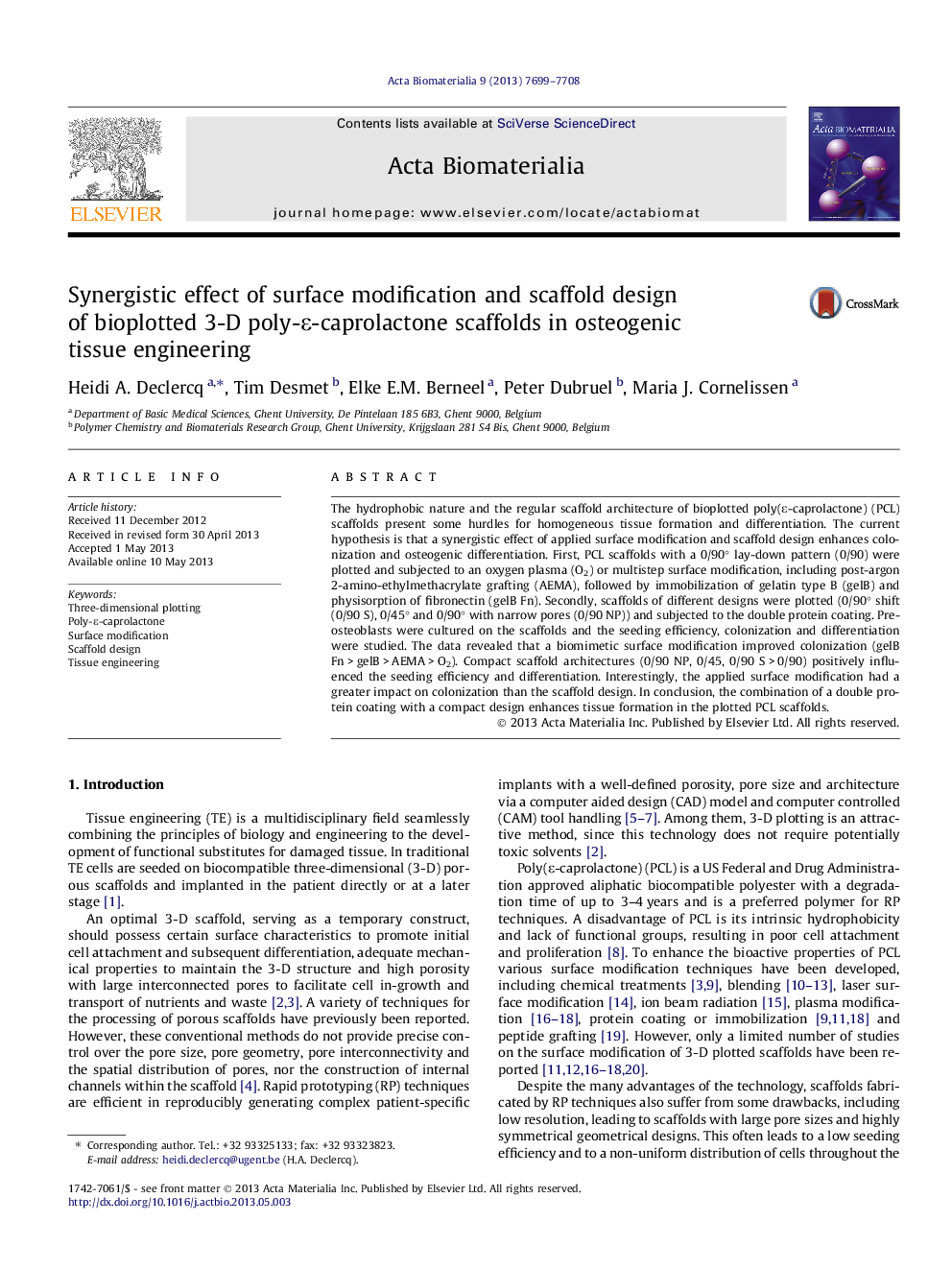| Article ID | Journal | Published Year | Pages | File Type |
|---|---|---|---|---|
| 10159595 | Acta Biomaterialia | 2013 | 10 Pages |
Abstract
The hydrophobic nature and the regular scaffold architecture of bioplotted poly(ε-caprolactone) (PCL) scaffolds present some hurdles for homogeneous tissue formation and differentiation. The current hypothesis is that a synergistic effect of applied surface modification and scaffold design enhances colonization and osteogenic differentiation. First, PCL scaffolds with a 0/90° lay-down pattern (0/90) were plotted and subjected to an oxygen plasma (O2) or multistep surface modification, including post-argon 2-amino-ethylmethacrylate grafting (AEMA), followed by immobilization of gelatin type B (gelB) and physisorption of fibronectin (gelB Fn). Secondly, scaffolds of different designs were plotted (0/90° shift (0/90 S), 0/45° and 0/90° with narrow pores (0/90 NP)) and subjected to the double protein coating. Preosteoblasts were cultured on the scaffolds and the seeding efficiency, colonization and differentiation were studied. The data revealed that a biomimetic surface modification improved colonization (gelB Fn > gelB > AEMA > O2). Compact scaffold architectures (0/90 NP, 0/45, 0/90 S > 0/90) positively influenced the seeding efficiency and differentiation. Interestingly, the applied surface modification had a greater impact on colonization than the scaffold design. In conclusion, the combination of a double protein coating with a compact design enhances tissue formation in the plotted PCL scaffolds.
Related Topics
Physical Sciences and Engineering
Chemical Engineering
Bioengineering
Authors
Heidi A. Declercq, Tim Desmet, Elke E.M. Berneel, Peter Dubruel, Maria J. Cornelissen,
